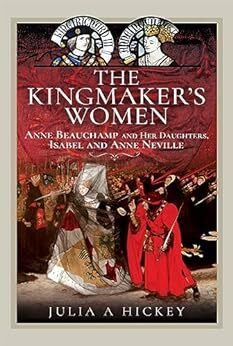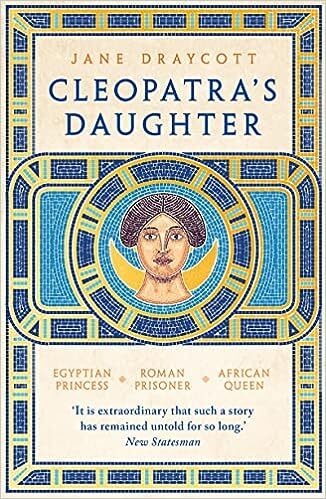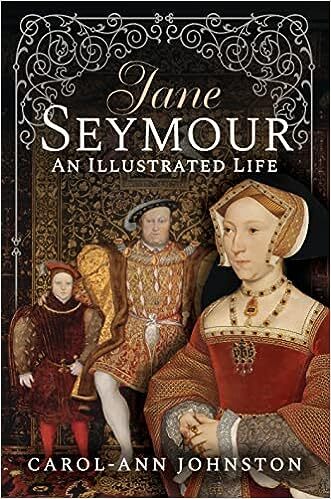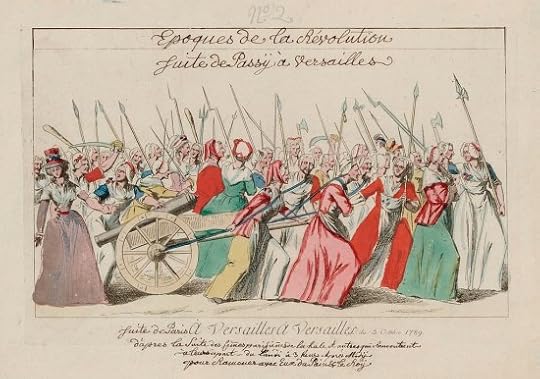Moniek Bloks's Blog, page 69
October 12, 2023
The Year of Marie Antoinette – Mozart comes to Schönbrunn
Marie Antoinette’s early life was centred around music, and the arrival of a musical prodigy would have been cause for much excitement.
Wolfgang Amadeus Mozart was just six years old when he, his father and his sister, visited the imperial family at Schönbrunn. Marie Antoinette was just three months older than the prodigy. On 13 October 1762, Mozart arrived at the palace to play the harpsichord in the presence of Empress Maria Theresa, Emperor Francis and several of their children, including Marie Antoinette. Court composer Georg Christoph Wagenseil was also present.
Mozart apparently played “marvellously” and was rewarded with an honorarium of 100 ducats and several presents. He was also given clothes that had belonged to Archduke Max, a lilac coat and a moiré waistcoat.1 He returned to play at Schönbrunn a week later. Mozart’s father later wrote, “We were received with some many marks of favour by Their Majesties that if I told you about it in detail, my account would be taken for a fairy tale.”2
A story goes that Mozart flung himself at Marie Antoinette and declared that he would marry her when he grew up, but this seems rather unlikely. However, he managed to jump into the Empress’s lap and received a kiss in return. Although Mozart would attempt to gain Marie Antoinette’s patronage several years later when she was already Queen of France, her first pregnancy meant that they were unable to meet.
The post The Year of Marie Antoinette – Mozart comes to Schönbrunn appeared first on History of Royal Women.
October 10, 2023
Teotlalco – The first Empress to Emperor Moctezuma II of the Aztec Empire
Teotlalco was one of the two Empresses to Emperor Moctezuma II of the Aztec Empire. She was an Aztec princess. While very little information is known about her, it is clear that she was the most powerful woman in the Aztec Empire. She was the only person who could personally contact Emperor Moctezuma II. Even though she was very powerful, Empress Teotlalco suffered a tragic fate at the hands of the Spanish conquistadors during The Night of Sorrows on 1 July 1520.
Empress Teotlalco’s origins are mostly unknown. Some accounts claimed that she was the daughter of the King of Tlacopan.[1] Historian Camilla Townsend claimed that she was the daughter of Emperor Ahuitzol of the Aztec Empire and that her mother was from Tepanec.[2] Historian David Chipman claimed that Empress Teotlalco was a princess from Ecatepec, and her father was King Matlaccohuatl.[3] Teotlalco was not her real name.[4] Instead, it meant that she was a princess.[5] Despite Empress Teotlalco’s unknown origins, it is clear that she was a princess from an Aztec royal family.
Princess Teotlalco married Emperor Moctezuma II (the Aztec Emperor who would meet the famous Spanish conquistador, Hernan Cortez). She became the Empress of the Aztec Empire alongside Emperor Moctezuma’s other Empress, Tlapalizquixochtzin.[6] Because Tlapalizquixochtzin was the queen regnant of Ecatepec, Empress Teotlalco was mostly involved in the affairs of the Aztec Empire.[7] She was the most powerful woman in the Aztec Empire.[8] She was the only person in the entire Aztec court that had personal contact with Emperor Moctezuma II.[9] She also served as a public figure to the Tenochtitlan people.[10] Thus, Tlapalizquixochtzin reigned over a city-state, but Empress Teotlalco ran the empire with Emperor Moctezuma II.[11]
In circa 1509, Empress Teotlalco gave birth to her first-born child, Doña Isabel Moctezuma.[12] Empress Teotlalco then went on to bear Emperor Moctezuma an unknown number of legitimate sons.[13] However, Empress Teotlalco and her sons perished during Hernan Cortes’s retreat on Tenochtitlan on 1 July 1520.[14] On 1 July 1520, Empress Teotlalco and her sons drowned in the Lake of Texcoco.[15] Thus, Empress Teotlalco’s only surviving child was Doña Isabel Moctezuma.[16] She would become the last Aztec Empress and would transition successfully into the Spanish nobility.[17]
Empress Teotlalco was the person who had the most contact with Emperor Moctezuma II. Empress Teotlalco was his political partner and was in charge of the affairs of the Aztec Empire. However, Empress Teotlalco suffered under the hands of Hernan Cortes, the Spanish conquistador. Thus, Empress Teotlalco and her sons perished during The Night of Sorrows. Yet, it is through her daughter, Doña Isabel Moctezuma, that her bloodline still survives to this day. Through Doña Isabel Moctezuma, Empress Teotlalco’s and Emperor Moctezuma II’s names will continue to live on and never be forgotten.
Sources:
Cabanillas, N. (n.d.). The Court of God-King Moctezuma II (PDF). GatorMUN XVII. Retrieved on January 2, 2023 from http://www.gatormun.org/uploads/5/1/3....
Chipman, D. E. (2010). Moctezuma’s Children: Aztec Royalty Under Spanish Rule, 1520–1700. (n.p.): University of Texas Press.
Townsend, C. (2019). Fifth Sun: A New History of the Aztecs. United States: Oxford University Press.
Spanish-American Genealogist Issues 23-46. (1977). United States: Hartwell Company.
Struggle and Survival in Colonial America. (1981). (D. G. Sweet, Ed.; G. B. Nash, Ed.). United Kingdom: University of California Press.
[1] Spanish-American Genealogist Issues 23-46, 1977
[2] Townsend, 2019
[3] Chipman, 2010
[4] Townsend, 2019
[5] Townsend, 2019
[6] Cabanillas, n.d.
[7] Cabanillas, n.d.
[8] Cabanillas, n.d.
[9] Cabanillas, n.d.
[10] Cabanillas, n.d.
[11] Cabanillas, n.d.
[12] Sweet and Nash (Eds.),1981
[13] Sweet and Nash (Eds.), 1981
[14] Spanish-American Genealogist Issues 23-46, 1977
[15] Spanish-American Genealogist Issues 23-46, 1977
[16] Spanish-American Genealogist Issues 23-46, 1977
[17] Chipman, 2010
The post Teotlalco – The first Empress to Emperor Moctezuma II of the Aztec Empire appeared first on History of Royal Women.
October 9, 2023
Netflix teases The Crown season six
Netflix has released a new promotional poster and a teaser for the sixth and final season of The Crown.
The new season will be released in two batches of five episodes. The first five will be released on 16 November and the last five on 14 December.

The post Netflix teases The Crown season six appeared first on History of Royal Women.
October 8, 2023
Review: Sisi & I
Sisi & I (original title Sisi & Ich) is a German-language historical black comedy starring Susanne Wolff as Empress Elisabeth of Austria and Sandra Hüller as Countess Irma Sztáray.
Although Irma really did serve as Elizabeth’s lady-in-waiting, the film is largely fiction. It begins as the 42-year-old spinster Irma is presented in a bright pink gown to be a lady-in-waiting to the Empress. She is shipped off to Corfu, where Elisabeth is living with a number of women. She is immediately subjected to Elisabeth’s whims and is forced to undergo a physical test to see if she can endure the Empress’s endless walks and gymnastic exercises. Of course, she fails miserably.
Although Irma is fascinated by the Empress and her newfound life away from her mother, Elisabeth’s attitude swings from extreme to extreme. The two begin to travel and seem to get closer, with Irma copying Elisabeth’s eating disorder. After Irma is subjected to hearing Elisabeth being raped by her husband, she ends up asking Irma to murder her while blaming it on an Italian anarchist.
I went in not quite knowing what to expect, but I was glad to see that she had not been turned into some kind of feminist icon like some recent productions have been doing. The vibe in the film was a bit out of my comfort zone, with loud modern music screeching through the scenes at times. I was glad to see the inclusion of Luziwuzi, Archduke Karl Ludwig, the younger brother of Emperor Franz Joseph, who had been exiled from Vienna after being caught in a gay scandal. He gets along well with Elisabeth, and he is allowed in the “women-only” zone.
Some situations may appear rather ridiculous, such as one of the other women posing as Elisabeth during public outings, but this actually happened. Elisabeth’s eventual assassination by an Italian anarchist is also real, but she asks Irma to stab her in the film. Something was probably lost in translation here, as I had no idea what was happening and after speaking to a fellow movie-goer, she hadn’t seen it coming either. Another thing that bothered me is that, once again, this movie has trouble with the style of address. Her entire life was drenched in the protocol, but she’s still “Highness” throughout the movie.
Overall, it’s quite an interesting film that portrays the various sides of the Empress and doesn’t shy away from the bad. I was surprised, though, that no mention is made of her children, especially Crown Prince Rudolf, by whose death she was very much affected.
The film currently has no release date for the US or the UK.
The post Review: Sisi & I appeared first on History of Royal Women.
October 7, 2023
Book News Week 41
Book news week 41: 9 October – 15 October 2023

The Kingmaker’s Women: Anne Beauchamp and Her Daughters, Isabel and Anne Neville
Hardcover – 12 October 2023 (US)

Queen Elizabeth II: A Celebration of Her Life and Reign in Pictures
Hardcover – 10 October 2023 (US & UK)

The Queen’s Green Canopy: Ancient Woodlands and Trees
Hardcover – 10 October 2023 (US)

Cleopatra’s Daughter: Egyptian Princess, Roman Prisoner, African Queen
Paperback – 12 October 2023 (UK)

Charles II’s Illegitimate Children: Royal Bastards
Hardcover – 12 October 2023 (US)

The Forgotten Tudor Royal: Margaret Douglas, Grandmother to King James VI & I
Hardcover – 12 October 2023 (US)

Jane Seymour: An Illustrated Life
Hardcover – 12 October 2023 (US)
The post Book News Week 41 appeared first on History of Royal Women.
October 5, 2023
The Year of Marie-Antoinette – Marie Antoinette & her sister Maria Anna
Archduchess Maria Anna, or Marianne of Austria, was born on 6 October 1738 at the Hofburg Palace as the eldest surviving daughter of Empress Maria Theresa and Francis of Lorraine. She was briefly the heiress presumptive from the death of her elder sister until the birth of her younger brother Joseph. She was baptised the day after her birth.
She received an education, but not much was expected of her, and her mother never thought to prepare her daughters better than she herself had been prepared. Her daughters were “born to obey, and have to learn to do so betimes… Under no circumstances must they be permitted to feel fear, be it of thunderstorms, fire, spooks, witches or similar nonsense, and the servants must neither discuss such matters among themselves nor tell any ghost stories. As the princess must not be afraid of illnesses, you will talk to them about any of these quite naturally, even of smallpox. And of death also, for it is well to familiarise them with the thought of it…”1
She was one of her mother’s least favourite daughters and developed a close relationship with her father. Maria Anna always resented her mother’s preferential treatment and acted out in response, trying to put herself in the spotlight.
When her younger sister Marie Antoinette was born in 1755, the 17-year-old Maria Anna acted as a proxy for one of her godparents, the Queen of Portugal (Mariana Victoria of Spain). Maria Anna suffered from bad health and nearly died when she contracted pneumonia in 1757. She was even given last rites, and her recovery seemed miraculous. Her lungs were permanently damaged, and she ended up with spinal tuberculosis, which caused a curvature of the spine. To hide this, she wore wide collars and loosely draped scarves. When no suitor appeared for her hand, she became withdrawn. In her diaries, only uncovered in 1910, she confessed she loved someone for 21 years but never revealed their identity.
She became interested in religious life when she visited a small monastery in 1765 on her way to the wedding of her brother Leopold. Her father’s death that same year was a blow to her. She wrote, “God… suddenly and terribly took away my much-loved father, the one who was my only support, my only pleasure. He suddenly took him away. This death knocked me to the ground, this death put an end to all joys and entertainments for a year. […] I confess it, I was so violent, so exaggerated in my sorrow, as I was unfortunately in everything.”2
Her brother Leopold later wrote, “Marianna has no influence, she lives a secluded life.. she had much talent and ambition… sees herself completely despised and insulted by the Empress and Emperor who never look her in the face and inflict the worst insults on her. […] She is full of mistrust and secrets…”3
In 1766, she was made abbess of the Imperial and Royal Convert for Noble Ladies in Prague, but she had no intention of actually living there. Not much later, she returned to the first monastery she first visited in Klagenfurt and became its abbess. A palace was built for her nearby, although she still spent much time at home during her mother’s lifetime. When her mother died in 1780, she moved permanently to Klagenfurt.
Maria Anna began to build her mineral and insect collection and wrote a book on her mother’s politics. She was even an avid painter and artist. She was made an honorary member of the Academy of Fine Arts in Vienna in 1767. While at the monastery, she became interested in archaeology and personally donated 30,000 florins for excavations, and she took part in the excavations. These hobbies were considered to be unsuitable for a woman, and many turned their noses up at her.
Her younger sister Maria Antoinette spent one night at Klagenfurt on her way to Versailles to marry the Dauphin of France. When her brother Leopold visited in 1784, he wrote, “She is well and leads a pleasant life, she lives very bountifully and very simply, does much good, and so she is also gladly seen.”4 Only one other sister, Maria Amalia, visited her. She kept up correspondence with Maria Amalia and Maria Carolina, but there was very little contact with Marie Antoinette.
Maria Anna died on 19 November 1789, leaving everything she had to the monastery at Klagenfurt. At the time, Marie Antoinette was under guard at the Tuileries with her family.
The post The Year of Marie-Antoinette – Marie Antoinette & her sister Maria Anna appeared first on History of Royal Women.
October 4, 2023
The Year of Marie Antoinette – The Women’s March on Versailles
On 5 October 1789, life was proceeding as usual at Versailles. Marie Antoinette was spending the day at the Petit Trianon while Louis was out hunting in the woods. His hunt was interrupted when an urgent message arrived from the Minister of the Royal Household, saying that there had been “events.”
In fact, a march of market women had set out from Paris at ten that morning, and they were intending to demand flour or grain from their King, as well as his assent to constitutional changes proposed by the Assembly.
King Louis returned to Versailles upon receiving the message, and he arrived there around 3 in the afternoon. Marie Antoinette was also summoned home, while their son’s daily outing in his carriage was cancelled. As the women marched on, they discussed what to do. Should they change locations or send Marie Antoinette and the children away at least? Marie Antoinette vetoed that idea, as she believed her place was by the King’s side. King Louis refused to leave as he did not want to be seen as a fugitive King.
 (public domain)
(public domain)The first women began to arrive about an hour later, and no decision had been reached. Eventually, he agreed to receive one of the women whom he promised that he would tell the directors of two granaries to release all possible stores. He even gave her his promise in writing before she returned to the crowd. However, they did not disperse and remained angry. A plan was then formed that they would bodily transfer the King to Paris. Chants asking for Marie Antoinette’s head could also be heard. Once again, the idea of the family leaving was floated. In an attempt to alleviate some of the tension, King Louis signed some preliminary decrees which had to do with the Constitution.
As the crowd raged outside, the Dauphin and his sister fell into an uneasy sleep. The Dauphin’s governess had been instructed to take him to the King in case of an emergency. Marie Antoinette went to bed but did not fall asleep. Her daughter, Marie Thérèse, later wrote, “My mother knew that their chief object was to kill her; nevertheless, in spite of that, she made no sign but retired to her room with all possible coolness and courage [after ordering all who had gathered there to retire also].”1
Early the following morning, some in the crowd found a way into the palace. Marie Thérèse wrote, “At the same moment, the wretches forced the door of my mother’s room; so that one instant later, she would have been taken without means of escape. As soon as she entered my father’s rooms, she looked for him but could not find him; having heard she was in danger, he had rushed to her apartment, but by another way. Fortunately, he met my brother, brought to him by Mme. de Tourzel, who urged him to return to his rooms, where he found my mother awaiting him in mortal anxiety. Reassured about my father and brother, the queen came in search of me; I was already awakened by the noise in her rooms and in the garden under my windows; my mother told me to rise, and then took me with her to my father’s apartment.”2
The violence eventually subsided with the help of the Marquis de Lafayette’s National Guard, and he convinced the King to address the crowd. He expressed his desire to return to Paris, which cheered the crowd. After he withdrew, the crowd demanded to see Marie Antoinette, who appeared with both her son and daughter. As the crowd shouted at her, the Marquis de Lafayette knelt and kissed her hand.
That afternoon, a large procession, including the royal family, headed for Paris. The King’s sister who had told him, “It is not Paris, Sire, that you should go. You have still devoted battalions and faithful guards to protect you. I implore you, my brother, not to go to Paris.” As their carriage passed Montreuil, she bent forward to look at the trees. Her brother asked, “Are you bowing to Montreuil, sister?” She answered, “Sire, I am bidding it farewell.”3
The family was taken to the Tuileries, where they would live under guard. The only one to ever return to Versailles was Marie Thérèse, who, in August 1814, briefly roamed the palace she had grown up in.
The Women’s March on Versailles was an important event in the French Revolution, and P. A. Kropotkin described the invasion of the palace as “one of those defeats of royalty from which it never recovered.”4
The post The Year of Marie Antoinette – The Women’s March on Versailles appeared first on History of Royal Women.
October 3, 2023
Julia Berenice I – The star-crossed romance between the Jewish Queen and the Roman Emperor
Queen Julia Berenice I of Chalcis and Cilicia was one of the most remarkable queens of the Herodian Dynasty. She ruled Chalcis alongside her brother, King Herod Agrippa II. Yet, her greatest legacy was her infamous romance with Emperor Titus. She was almost made the Empress of Rome. However, their romance was met with opposition. In the end, Emperor Titus sacrificed his love for Queen Julia Berenice I of Chalcis and Cilicia for the good of the Roman Empire.
Queen Julia Berenice I of Chalcis and Cilicia was born in 28 C.E. She was the descendant of King Herod the Great and the Hasmonean kings. She was born before her father, Prince Herod Agrippa I, became king. Her mother was Cypros. She had an older brother, the future King Herod Agrippa II of Chalcis, and two younger sisters named Mariamne and Julia Drusilla. She was the niece of Princess Herodias and the cousin of Queen Salome (both of whom would play major roles in the execution of John the Baptist). Princess Julia Berenice was said to be very beautiful.[1]
In 36 C.E., Herod Agrippa I and Cypros became the King and Queen of Judea. In 41 C.E., at the age of thirteen, she married Marcus. He was the son of Alexander (the leader of the Jewish community in Alexandria) and the nephew of Philo (the famous Alexandrian philosopher) in 41 C.E.[2] However, he died shortly afterwards.[3] In 44 C.E., Princess Julia Berenice married her uncle, King Herod V of Chalcis, when she was sixteen.[4] Therefore, Julia Berenice was Queen of Chalcis. She bore him two sons named Hyrcanus and Berenicianus.
In 48 C.E. King Herod V of Chalcis died. He gifted Chalcis to her brother, Herod Agrippa II. However, Queen Julia Berenice reigned alongside him as co-ruler.[5] Her name even preceded her brother.[6] King Agrippa II must have been extremely fond of her.[7] If he was not, he would not have let her rule equally as his co-ruler.[8] This gave rise to many rumours that they were in an incestuous relationship.[9] These rumours may have been true.[10] Many of their contemporary Eastern monarchs, such as Antiochus IV, married their sisters.[11] Also, Queen Julia Berenice did have a certain hold on her brother.[12] Therefore, their relationship may have been incestuous.
In order to quell the rumours that Queen Julia Berenice was in an incestuous relationship with her brother, she married King Polemom II of Cilicia, (a descendant of Mark Antony and the nephew of Queen Cleopatra Selene of Mauretania) in 53 C.E.[13] King Polemom II desired to marry her for wealth and beauty.[14] King Herod Agrippa II tried to prevent her marriage.[15] However, he had no choice because King Polemon II of Cilicia converted to Judaism to marry her.[16] Thus, Julia Berenice also became Queen of Chalcis and Cilicia. Their marriage proved unhappy.[17] Queen Julia Berenice left King Polemon II of Cilicia and returned to her brother.[18] She resumed her duties as his co-ruler.[19]
In 60 C.E., Queen Julia Berenice and King Herod Agrippa II went to Caesarea to welcome Festus, who was the new governor. They also witnessed Paul the Apostle’s trial.[20] In 66 C.E., the Roman governor, Florus’s violent measures against the Jews provoked a rebellion in Jerusalem known as the Jewish War.[21] Queen Julia Berenice was currently in the city and made a vow to God to stop the rebellion.[22] She shaved her head, walked barefoot, and abstained from wine for thirty days.[23] She begged Florus while she was barefoot.[24] She sent her bodyguards and cavalry officers to plead with him for mercy.[25] However, Florus ignored Queen Julia Berenice’s pleas.[26] He continued pillaging the city. He would have killed Queen Julia Berenice. However, she sought refuge in the palace and barricaded it with her bodyguards.[27]
When King Herod Agrippa II returned from Egypt to Jerusalem, with Queen Julia Berenice at his side, he tried to calm the Jewish people.[28] He succeeded for a short time until the people demanded he punish Florus for his actions.[29] However, King Herod Agrippa II and Queen Julia Berenice chose Rome over their own people.[30] This would have dire consequences for them. King Herod Agrippa II told them to wait until Emperor Nero sent his replacement.[31] This angered the Jewish people.[32] They threw stones at Queen Julia Berenice and King Herod Agrippa II.[33] They fled Jerusalem, and the people burned their palace.[34]
Queen Julia Berenice and King Herod Agrippa II openly allied themselves with Rome.[35] They supplied the forces of General Vespasian (the future Roman Emperor) with their own forces.[36] Eventually, Vespasian’s son, the Roman General Titus, burnt Jerusalem, which ended the rebellion. It was during this period that Queen Julia Berenice met the future Roman Emperor.[37] Queen Julia Berenice was at least thirteen years older than him but was still very beautiful.[38] Titus fell in love with her.[39] They became lovers in 67 C.E. Their affair lasted for twelve years.[40] Titus made her a marriage proposal which she accepted.[41]
Before the death of Emperor Vespasian, Titus sent for Queen Julia Berenice and King Herod Agrippa II to return to Rome.[42] She lived in the palace with Titus.[43] They planned their marriage, and Queen Julia Berenice prepared for her future as the next Roman Empress.[44] However, the Roman senators opposed the marriage between Titus and Queen Julia Berenice.[45] They were afraid of having a foreign queen as their Roman Empress.[46] They believed that she would be another Queen Cleopatra VII of Egypt.[47] They also did not like that Queen Julia Berenice was Jewish.[48] They begged Emperor Vespasian not to let Titus marry Queen Julia Berenice.[49] Emperor Vespasian then demanded his son send Queen Julia Berenice away.[50] This forced Titus to make a difficult decision. It was either the Roman throne or Queen Julia Berenice.[51] In the end, he chose the throne.[52] Against his will, Titus sent Queen Julia Berenice away.[53]
Queen Julia Berenice was still unwilling to abandon her dream of becoming a Roman Empress.[54] When Emperor Vespasian died in 79 C.E., and Titus became the new Emperor, she still thought that she could marry him.[55] However, when she arrived in Rome, Emperor Titus had to harden himself against her.[56] He was cold to her and made it clear that he would not marry her.[57] He had already sacrificed his love and happiness with Queen Julia Berenice in order to serve the Roman Empire.[58] Thus, he sent Queen Julia Berenice away for the second time. After her second dismissal, her life remains unknown.[59] There is no mention of when or how she died.[60] The only thing mentioned about her afterwards was that she was frustrated that she did not become the Empress of Rome.[61]
The ill-fated romance between Queen Julia Berenice I of Chalcis and Cilicia and Emperor Titus has been the subject of dramas, operas, and novels. However, Queen Julia Berenice I of Chalcis and Cilicia proved to be a powerful woman. She co-ruled with her brother as his equal, and her name even preceded hers. Her greatest downfall was that she sided with Rome rather than her own people. Still, Queen Julia Berenice I of Chalcis and Cilicia was one of the most powerful queens of her time. It is no wonder that she has often been referred to as the “Great Queen.” [62]
Sources:
Gottheil, R. & Bloch, H. (1906). “Berenice”. The Jewish Encyclopedia. Retrieved on December 23, 2022 from https://jewishencyclopedia.com/articl....
Ilan, Tal. (31 December 1999). “Berenice.” Shalvi/Hyman Encyclopedia of Jewish Women. Jewish Women’s Archive. Retrieved on December 23, 2022 https://jwa.org/encyclopedia/article/....
Macurdy, G. H. (1937). Vassal-queens and Some contemporary Women in the Roman Empire. Baltimore: The Johns Hopkins Press.
Vasta, M. S. (2007). “Titus and the Queen: Julia Berenice and the Opposition to Titus’ Succession”. Honors Projects. 1.
https://digitalcommons.iwu.edu/grs_ho...
[1] Gottheil and Bloch, 1906
[2] Ilan, 31 December 1999
[3] Gottheil and Bloch, 1906
[4] Gottheil and Bloch, 1906
[5] Vasta, 2007
[6] Vasta, 2007
[7] Vasta, 2007
[8] Vasta, 2007
[9] Vasta, 2007.
[10] Gottheil and Bloch, 1906; Ilan, 31 December 1999
[11] Macurdy, 1937
[12] Vasta, 2007
[13] Ilan, 31 December 1999
[14] Gottheil and Bloch, 1906
[15] Gottheil and Bloch, 1906
[16] Gottheil and Bloch, 1906
[17] Gottheil and Bloch, 1906
[18] Gottheil and Bloch, 1906
[19] Gottheil and Bloch, 1906
[20] Gottheil and Bloch, 1906
[21] Ilan, 31 December 1999
[22] Vasta, 2007
[23] Vasta, 2007
[24] Vasta, 2007
[25] Vasta, 2007
[26] Vasta, 2007
[27] Vasta, 2007
[28] Vasta, 2007
[29] Vasta, 2007
[30] Vasta, 2007
[31] Vasta, 2007
[32] Vasta, 2007
[33] Vasta, 2007
[34] Vasta, 2007
[35] Gottheil and Bloch, 1906
[36] Ilan, 31 December 1999
[37] Ilan, 31 December 1999
[38] Gottheil and Bloch, 1906
[39] Macurdy, 1937
[40] Vasta, 1937
[41] Macurdy, 1937
[42] Macurdy, 1937
[43] Macurdy, 1937
[44] Macurdy, 1937
[45] Vasta, 2007
[46] Macurdy, 1937
[47] Vasta, 2007
[48] Vasta, 2007
[49] Vasta, 2007
[50] Vasta, 2007
[51] Vasta, 2007
[52] Vasta, 2007
[53] Vasta, 2007
[54] Vasta, 2007
[55] Vasta, 2007
[56] Macurdy, 1937
[57] Vasta, 2007
[58] Vasta, 2007
[59] Ilan, 31 December 1999
[60] Ilan, 31 December 1999
[61] Macurdy, 1937
[62] Vasta, 2007, p. 11
The post Julia Berenice I – The star-crossed romance between the Jewish Queen and the Roman Emperor appeared first on History of Royal Women.
October 1, 2023
The Year of Marie Antoinette – Her beauty regime
Marie Antoinette’s beauty regime quickly became a source of public fascination. Madame Campan reported, “All wished instantly to have the same dress as the Queen and to wear the feathers and flowers to which her beauty, then in its brilliancy, lent an indescribable charm. The expenditure of the younger ladies was necessarily much increased; mothers and husbands murmured at it, some few giddy women contracted debts; unpleasant domestic scenes occurred… and the general report was — that the Queen would be the ruin of all the French ladies.”1
Even her mother in Austria commented, “I must mention a subject upon which all the Gazettes enlarge, and that is your dress. They speak of hair-dressing, a coiffure, of thirty-six inches high from the roots of the hair with feathers and ribbons above that again! You know my opinion, to follow fashion in moderation, never to excess. A young and pretty Queen has no need of follies.”2 Marie Antoinette responded, “It is true I am rather taken up with dress, but as to feathers, everyone wears them, and it would seem extraordinary if I did not.”3
At the time, it was fashionable to powder the hair and to use pomatum (a scented oil) to fix it first. The powder was blown into the hair, while the receiver’s elaborate court dress was covered with a cape. It was also the custom to wear rouge, which was applied in huge circles in a bold colour. The rouge was meant to distinguish those of rank, and it was forbidden to wear it outside court. The face was also covered with a powder. This was not to everyone’s taste, of course, and Leopold Mozart wrote about the “detestable make-up… unbearable to the eyes of an honest German.”4 Even her own brother, Emperor Joseph II, mocked her appearance.
She kept up a skincare routine that included cleansing it with eau cosmetique de pigeon and using eau des charmes, which were drops exuded by grapevines. The eau d’ange purified and whitened her complexion. She also used a Pâte Royale hand cream and pomades with various scents. When she bathed, she used a soap scented with herbs, and she used a powder to keep her teeth white. Her rouge was purchased from Mademoiselle Martin, and she was also sent a rouge pomade to use on her lips, although it is unclear if she used this.5 She also had a grand collection of perfumes, which she kept in a grooming cabinet.
By the 1780s, Marie Antoinette began to prefer a simpler lifestyle, and she began to use both the powder in her hair and the rouge on her face sparingly.6 As the first grey hairs appeared, so did the first signs of revolution. In 1791, after the Flight to Varennes, Marie Antoinette took off her cap to reveal that her hair had gone completely white. She had a ring made with a lock of hair to be sent to the Princess of Lamballe with the inscription, “blanchis par malheur” (bleached by misfortune).7 It had probably been going white for a while, but before then, it was covered with dye or a simple cap.
On 16 October 1793, her white hair was hacked off with scissors and covered with a bonnet. She wore a simple white dress, coincidentally once the colour of mourning for the Queens of France, to her execution.
The post The Year of Marie Antoinette – Her beauty regime appeared first on History of Royal Women.
September 30, 2023
Book News Week 40
Book news week 40: 2 October – 8 October 2023

Powerful Princesses: 10 Untold Stories of History’s Boldest Heroines (Heroic Heroines)
Paperback – 3 October 2023 (UK)

Henrietta Maria: Conspirator, Warrior, Phoenix Queen
Paperback – 5 October 2023 (UK)
The post Book News Week 40 appeared first on History of Royal Women.



